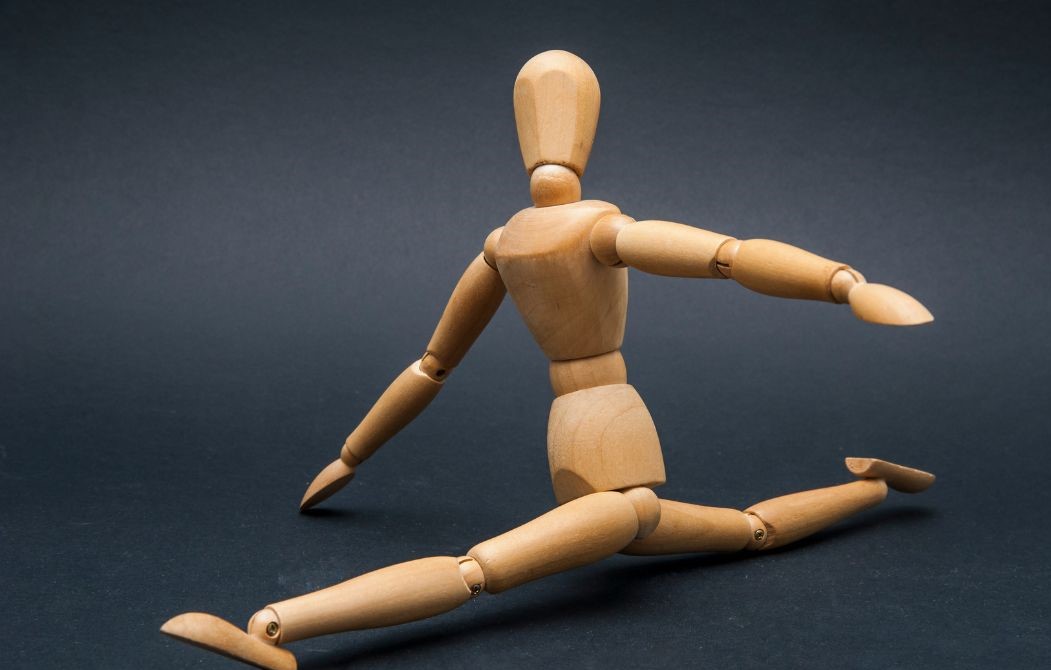
How Do You Improve Your Flexibility?
Well, you stretch – duh! But how and when do you do it? Most of us don’t want to be circus contortionists or yogis, but we understand that living with excessive tightness in one muscle group often leads to excessive pain, and potential problems in another part of the body, so we know that we need to release and stretch. Unfortunately, so much of the information on the internet is about doing the splits or achieving yogi-like poses. Something to aspire to maybe, but not so useful to where you are now. As osteopaths, we’re primarily interested in helping our patients regain and maintain mobility.
Flexibility VS. Mobility
What’s the difference between flexibility and mobility we hear you ask? Mobility is about your joints being able to move through their full range of movement. Flexibility is primarily about muscles. But the two have an impact on each other. We need our muscles flexible to maintain a full range of movement. Here’s an example: sitting all day (in meetings, at our desks, and while commuting) shortens your hamstrings. This can make fully extending the leg (straightening the knee) more difficult. This can affect your gait when you walk, which could lead to tightness and weakness in various muscles. Ultimately, a joint injury may result. So how do we improve and maintain flexibility?
Fundamentals of Stretching
What stretches you perform will depend on what parts of your body you need or want greater flexibility in. Your osteopath can advise you on specific stretches for your unique patterns of muscular tension. (In the meantime, one top tip is not to forget to stretch your hips.) But some fundamental ideas apply and will make any stretching program more effective. Keep these in mind.
- Breathe
Stretching can be a little bit uncomfortable – you’re working to the edge of your comfort zone after all. Many people tend to hold their breath in anticipation of pain, but that’s not effective. You need to breathe to calm yourself and ease into the stretch. You need to keep breathing as oxygen reaching the stretched muscles is part of the process.
- Focus on your spine
Slumping while stretching is not effective. Maybe you can touch your head to your knee if you curve your back over, but you’ll get a better hamstring stretch if you keep your back straight even if you get nowhere near as close.
- Warm-Up
You’ve probably been told many times to stretch before and after exercise as a warm-up. And that’s good advice. But if you’re stretching to improve flexibility, you need to warm up for the stretching itself. So, you might stretch gently, do a bit of cardio and strength training to make sure blood (and oxygen) are reaching the muscles in question and then perform your flexibility routine. A warm bath or shower before stretching, perhaps before bed is another good idea – the combination will lead to better sleep!
- Start from where you are
So, you can’t touch your head to your toes. Maybe just sitting on the floor is a challenge. That’s okay. Go gently, use furniture, yoga blocks or cushions to fill the spaces and work slowly towards improvement.
- Move consciously.
If you’re carving out thirty minutes a day to stretch (and do it well) you will make great progress (and should be congratulated). But that still leaves 23 hours and thirty minutes a day when you’re not stretching. That’s a lot of hours for old movement patterns to reassert themselves and for muscles to tighten and shorten. But by walking with an awareness of the range of motion available to your joints and consciously choosing to walk well (check posture, foot flexion, etc.) you’ll be fighting that tightening. Even choosing to stand rather than sit whenever possible will help!
Just a few tips to help you regain and maintain your flexibility. Of course, if you’re finding some tensions just won’t budge, the osteopaths at The Osteopath are here to help. Please call 075451 1599 to make an appointment. Our osteopaths have the knowledge and experience to help you find the right stretches for you. Happy Stretching.
References:
Harvard Health (2022, March 14). The Importance of Stretching. [Online] Available at https://www.health.harvard.edu/staying-healthy/the-importance-of-stretching. Accessed on 01/01/2023.
